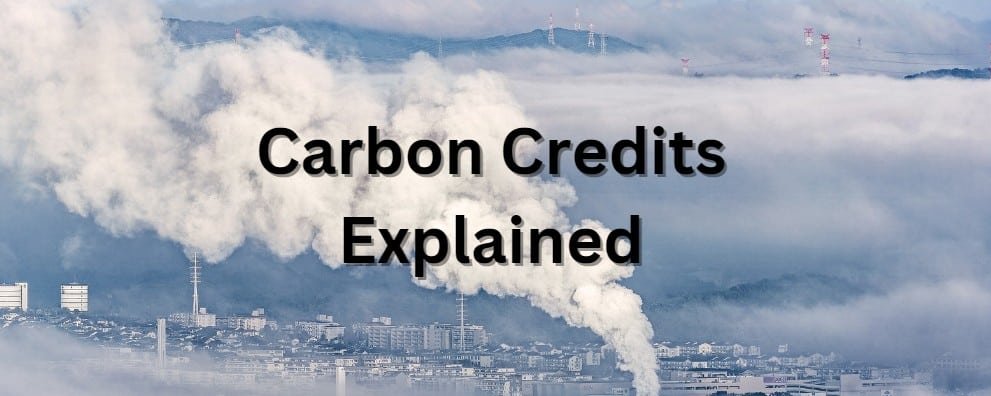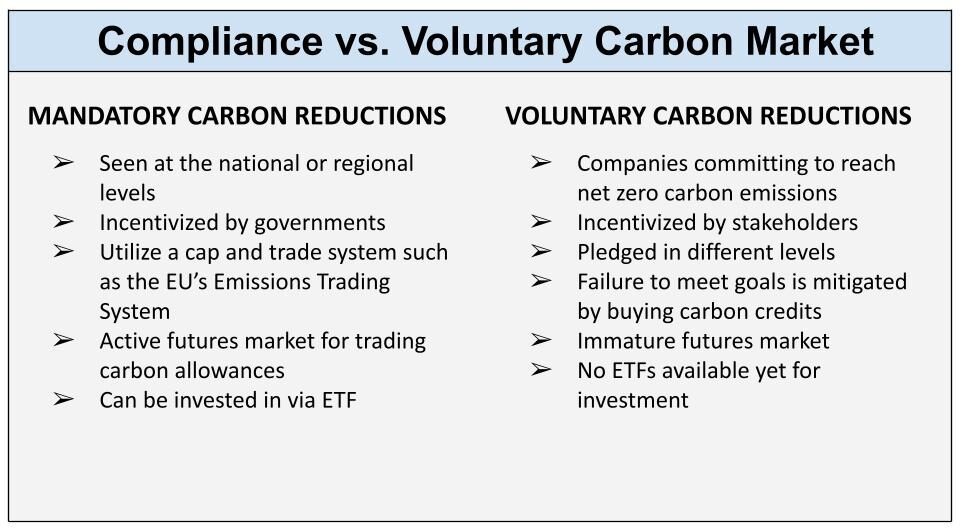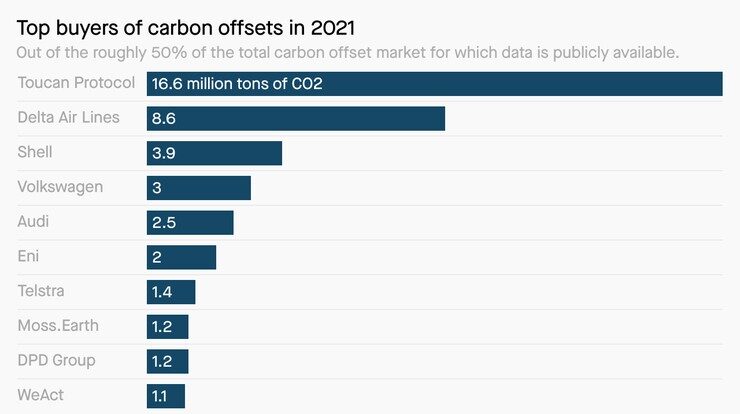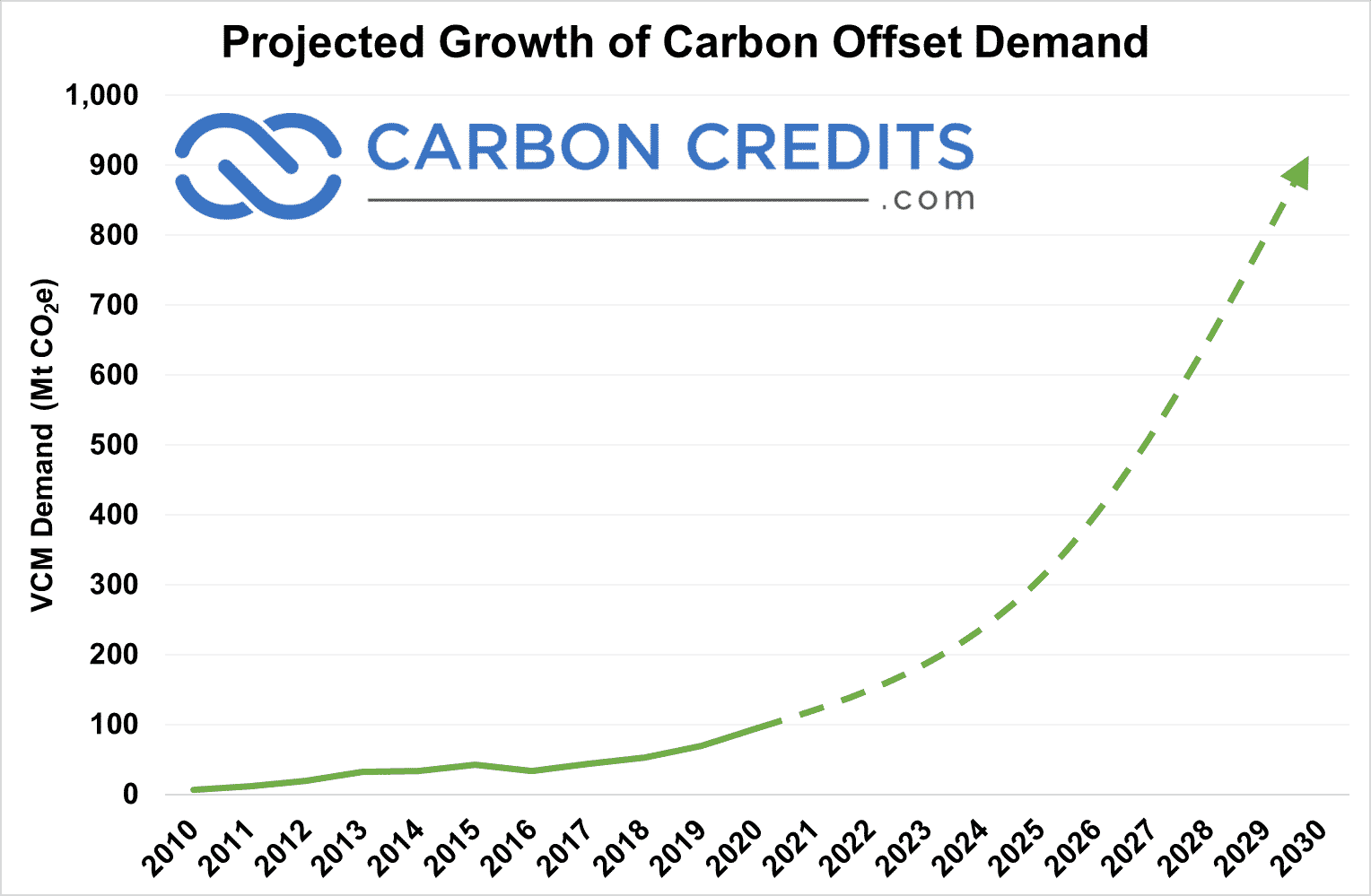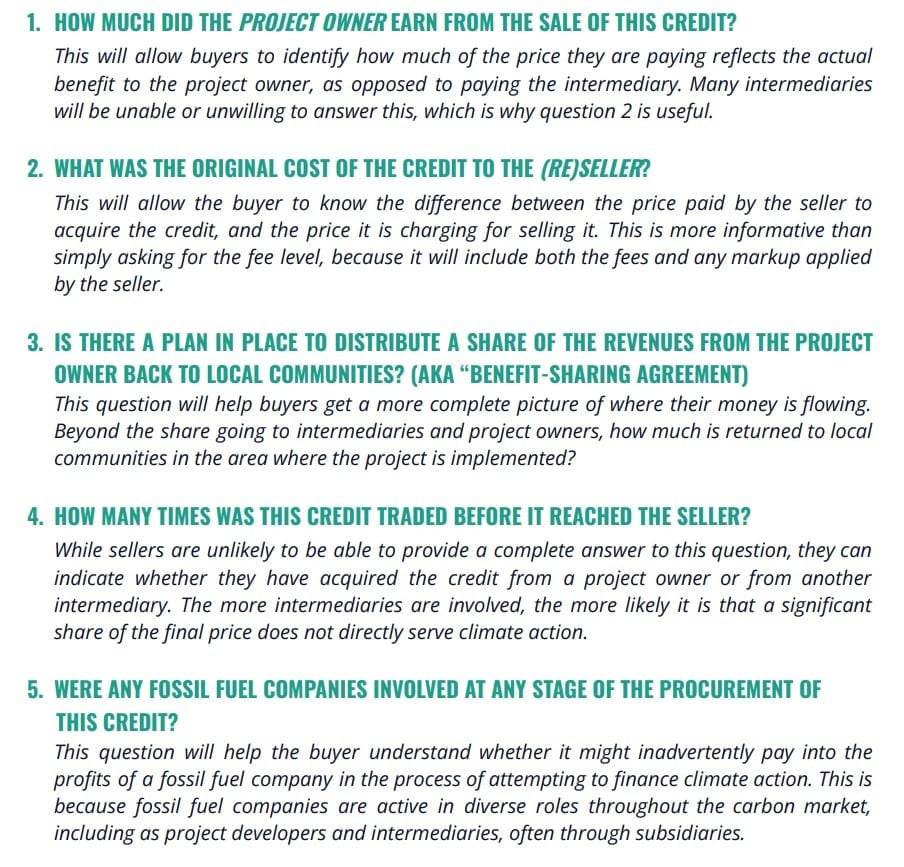As the world continues to experience out-of-this-world disasters, polluters are under more fire to help clean up the planet-warming carbon they dump into the air. As they do that, more people are asking what carbon credits are, how they work, and what role they’ve got in fighting the climate crisis.
Many believe that they are instrumental in promoting both corporate sustainability and global sustainable development.
Others think that carbon credits can help companies meet their climate goals by reducing emissions and advancing sustainable business practices.
Yet, some consider them as a greenwashing tool for some reason…
…But many more find them an essential market mechanism to help reverse the effects of climate change.
Regardless of the different views on carbon credits, getting them explained in this article will help clarify things and answer your most pertinent questions about them.
What are Carbon Credits?
The idea behind carbon credits is to put a price on carbon emissions. The goal? To incentivize emitters to pollute less, ideally.
In essence, carbon credits serve as permits to emit a certain amount of carbon. These permits are tradable in carbon markets. These markets turn CO2 emissions into a commodity by giving them a price.
International carbon trading markets have been around since the 1997 Kyoto Protocols. But the new regional markets have prompted a surge of investment.
The world has seen billions of metric tons (Mt) of CO2 pumped into the air every year. In 2022, around 41 billion Mt of greenhouse gasses were emitted, up from 36 billion Mt in 2016. These gasses are the ones to blame for the earth’s rising temperatures.
So, if we want to stop the planet from heating up more, we need some solutions up our sleeves. And yes, carbon credits are one of them. But how do they work in fighting climate change?
How Do Carbon Credits Work?
One carbon credit represents one tonne of CO2 or its equivalent (CO2e) gas that an organization can emit.
It’s important at this point to say that carbon credits are often referred to as carbon offsets. While they’re very similar, they’re not the same.
Carbon credits, also known as carbon allowances, work like permission slips for emissions. You can think of them as a unit of measurement for CO2e emissions that have a tradable element.
The number of credits issued to a company corresponds to its emissions limit or “cap” set by a regulatory body. So, they’re also called a “cap and trade” system.
If that company doesn’t go above its cap, then it will have excess carbon credits which they can sell in the compliance carbon market regulated by the government. But if the company goes beyond the limit, it can turn to the carbon market to buy the required carbon credits.
In short, the governing organization creates carbon credits and allocates them to individual companies within that jurisdiction. Over-emitters buy carbon credits from under-emitters.
On the other hand, carbon offsets (also called carbon offset credits) are from projects or initiatives that reduce or remove carbon emissions.
Carbon reduction projects generally fall into two types: nature-based and technology-based.
Nature-based solutions usually include reforestation and wetland restoration projects. They naturally sequester carbon in the environment.
Technology-based projects often involve investments in new technologies that increase efficiencies or reduce emissions like renewable energy projects.
Once an offset is generated, the organization that develops or completes the project can retain the offsets or trade them on a voluntary carbon market (VCM).
Other companies can then buy the offsets to compensate for their own carbon footprint.
To fully distinguish the two terms, keep these keywords in mind – compliance for carbon credits and voluntary for carbon offsets.
In a compliance market, companies regulated by the government must abide by their limits or cap. Within the voluntary market, the idea is just the same. It’s just that companies do the offsetting voluntarily, either as part of their ESG goals or because of shareholders’ pressure
Who Are The Biggest Buyers Of Carbon Credits?
Carbon-intensive sectors such as energy face a harder quest to net zero emissions than others. That’s no surprise because companies in this sector simply can’t just instantly reduce their reliance on fossil fuels.
This is why the biggest buyers of carbon credits were from the energy sector, as well as from the finance, technology and consumer goods sectors. The Ecosystem Marketplace (EM) keeps track of these companies and how much credits they’re buying.
In another analysis, researchers found that at least 36% of large companies buy carbon credits voluntarily to offset their footprint. The analyzed companies include the world’s biggest and top S&P 500 businesses.
The findings revealed that Microsoft, Salesforce, Goldman Sachs, Disney, and Nike, among others are the top buyers.
The projects that those companies bought credits mainly generated in the global south. These projects often involved:
- Forestry projects,
- Renewable energy,
- Household and community projects
In a broader analysis by EM, which included carbon project developers and investors, they found that the most popular projects producing carbon offsets are forest and renewable energy initiatives.
In separate Bloomberg analysis of data from Verra, the largest buyers of voluntary carbon credits are cryptos, airlines, and carmakers. The analysis covers only about 50% of the global carbon market in 2021 as data is voluntarily disclosed.
On the sellers’ side, in case you don’t know it yet, Tesla is the largest seller of carbon credits under the California cap-and-trade system. The company had earned billions of dollars from it.
Last year, Tesla’s total carbon credit sales reached a record $1.78 billion. All thanks to the carmaker’s hundreds of thousands of sold EVs.
Now you might be wondering why Tesla earned that much from selling carbon credits. So your next question would be how much does each credit worth?
How Much Is A Carbon Credit Worth?
Same with other commodities, there’s no single price for a carbon credit.
The cost varies. A lot. Even so in the VCM.
The cost of carbon offsets depends on various things, including project quality, issuance year, verifiability, additional benefits created and so on. For live VCM carbon pricing, please go here.
Let’s consider the project type. Common carbon offsetting projects are forestry and nature conservation, waste-to-energy, and renewable energy. Some of these projects can be worth below $1 per tonne of carbon offset, while others can cost over $40.
For a clearer explanation, take for example you opt to have a forest tree planting initiative.
If a tree can store about 5 tonnes of carbon and each tonne of carbon removed is valued at $15, you’ll generate $75/tree. Assuming the cost of carbon increases, then your revenue goes up, too.
Sounds pretty good in theory, right? But in real life, that could even be better, especially the figures.
Several farmers have been receiving over $100,000 in yearly income by letting their lands sequester over 7,000 tonnes of CO2. Boston-based Indigo Ag has been paying their partner farmers that amount and more, depending on how much carbon their farms remove.
Looking at the entire market, the VCM was valued at $2 billion in 2022 alone. It may be quite huge for some market outsiders, but for insiders that’s rather not surprising.
That’s because more and more companies and organizations are expected to reveal their net zero pledges. And as mentioned earlier, over a third of the large businesses are using carbon credits as offsets.
For a better picture of how huge the market could get, take a look at the projection below.
That estimation is conventional and other market analysts predict even higher demand growth.
So how could you leverage this exponential carbon market growth? You might be asking how you can invest in carbon credits, earn profits, or simply help in the climate change fight.
We’ll explain the steps involved in the next sections. Let’s first help you out on how to buy carbon credits step-by-step.
How To Buy Carbon Credits
Buying carbon credits may not be as simple as selling them. But after you’ve known the criteria for a successful purchase, the following steps won’t be hard.
#1. Buy directly from project developers
This is the most direct way to get the credits you need – at the source. That’s from the project developers themselves. Here are the top five options that have the highest ranks.
You can either directly invest in the project as it’s being developed (lowest cost but longest time to wait until delivery) or you can contract for delivery (lower than market price but still have to wait for some time).
#2. Buy from a broker
If you want to skip all the work needed when contracting with the developer, look for a broker. Yes, carbon credits have brokers, too.
They make it easier for you and other buyers to find the credits you need. Plus, the best ones can give you an analysis of the project where those credits are from.
This is perhaps the most practical way to buy carbon credits, more so if you need a lot of them. The purchasing process doesn’t include long contracts but, of course, you guess it right – it comes with a price. So, you may have to pay more for the broker’s services.
#3. Purchase from a retailer
If you’re still wondering how to buy carbon credits if you only need a smaller volume, then going for a retailer might help. In fact, this option may also be the fastest way to get the credits.
Most often, retailers have an account on a carbon registry, allowing them to retire the credits on your behalf. But ensure that after paying the retailer, you get the rights to the credits.
#4. Purchase from an exchange
Finally, you can buy carbon offset credits from a carbon exchange. Doing so will also allow you to earn profits from trading them.
There are plenty of carbon exchanges but here are the top trading platforms worth exploring. They usually work with carbon registries to facilitate their trading transactions.
Sourcing the credits from an exchange can be quick and easy. But it may also be more difficult to access enough information about the credits’ quality.
So, there you have it. You’ve got four ways on how to buy carbon credits. Here’s a much more comprehensive guide on how to do that. And here’s the checklist you should keep in mind as a buyer.
Now, if you’re more into selling the credits or planning to sell them and get paid, here are the ways to do that.
How To Sell and Get Paid for Carbon Credits
The fastest way to sell these credits is through an online carbon exchange. There are many within the U.S. and globally that allow sellers to get paid for their offsets.
Carbon exchanges are pretty much similar as to how various regular stock exchanges operate. Selling or trading through them follows this general rule: buy low, sell high.
One quick tip though – quality carbon credits sell higher. So, it’s best if the offset credits you sell follow the standards set by the top carbon registries.
Next, if you’re a land owner or farmer, you need to secure the documents showing that you own the land, along with all the details describing your land. You must also have the papers documenting the land management practices you perform. This is crucial for the buyers and as proof that your land captures the amount of carbon you declare.
The same applies to any carbon reduction project that generates your credits.
But before you sign any contract with the buyer or look for one, do your research first. Knowledge will help you be confident that the amount you’ve sold or get paid for is enough and not too low than you deserve.
As mentioned earlier, you may also opt to enlist the help of a broker. But be prepared to share the payment with one.
But if you want to take home all the money, then by all means, just find the right buyer yourself.
How To Earn Carbon Credits?
Before you can sell the credits, you have to earn them first. How do you do that?
If your business activity or project reduces, avoids, or removes CO2 from the atmosphere.
- For every metric ton of reduction or removal, you earn one carbon credit for it.
So if you have a huge project or a couple of them, you can earn even more credits to sell. But what are the major factors you need to consider to earn high-quality credits? Remember, quality credits sell higher.
Let’s give a specific example for a better understanding – a farmer or rancher.
Here are the things farmers should be aware of to earn more through carbon credits.
- Right carbon program.
The right carbon credit program prompts farmers to apply sustainable practices designed to improve soil health, reduce carbon emissions, and enhance soil carbon sequestration. The approach should take into consideration that each farm is unique and so needs a customized guideline.
- Right carbon farming plan.
Having a custom carbon farming practice plan means basing it on your baseline assessment and goals. The experts will guide you on how to implement carbon farming practices to generate the credits. Common examples are reduced tillage, improved residue management, cover corps, to name a few.
- Right implementation.
This stage requires proper data-keeping and monitoring. Remember your goal is to generate credits by implementing the changes in your farming methods. Availability of data will help you guide what to improve in your practices.
- Verification.
Verifying your data and results can be done by the carbon program you partner with or an independent body. Verification means determining if the amount of carbon removals or reductions your farm delivers is correct.
Only with all those things in place that you can be issued with carbon credits and earn them.
Carbon Credits Explained: Key Takeaway
To wrap it all up, can you make money from carbon credits? Yes, you can. Either by selling them or trading them as an asset.
Either way, you are not only earning cash but you are also contributing to winning over the climate change fight.
After all, carbon credits were designed to encourage us to reduce our planet-damaging footprint before it’s too late.

